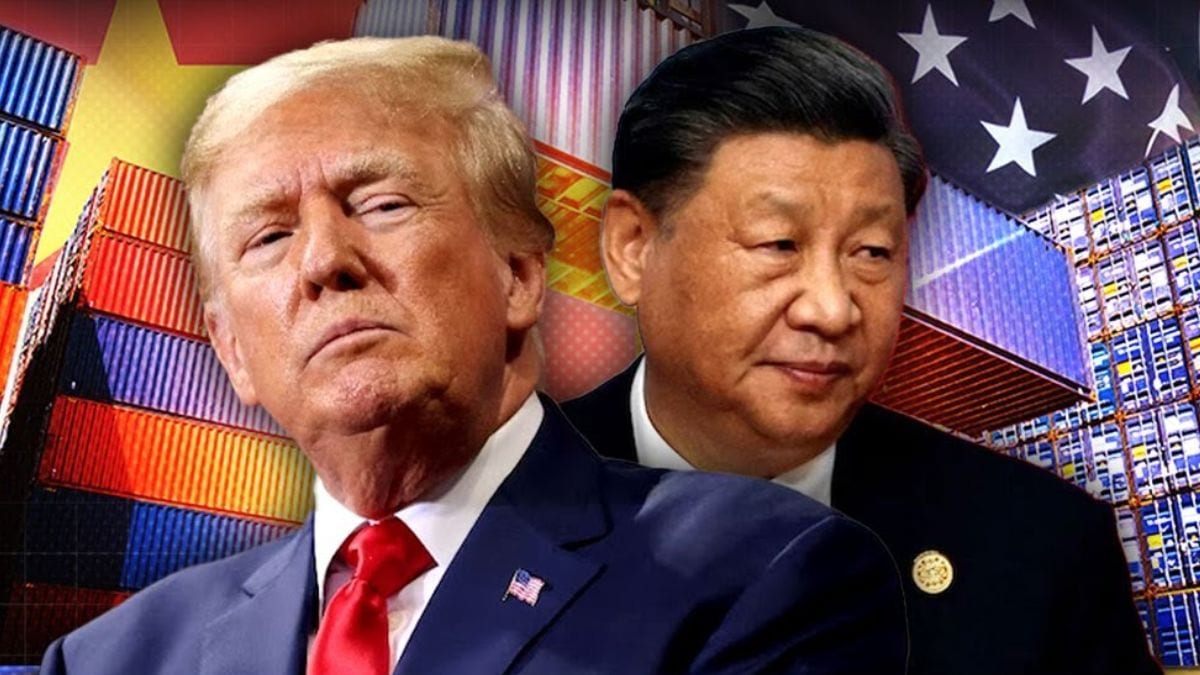The gloves are off in the economic cage match between China and the US. With tariffs, sanctions, and export controls as the preferred weapons, what started out as a strategic attempt to protect American interests has devolved into a high-stakes trade war. A flurry of repercussions has resulted from the Trump administration’s assertive posture, which was domestically founded on pledges to bring manufacturing and limit China’s influence worldwide.
While China’s retaliatory strikes are demonstrating Beijing is no pushover, Americans are being severely impacted by billions of dollars in lost exports, damaged supply chains, and skyrocketing consumer prices. This is a test of economic resolve that has the power to alter the global order; it is more than just a trade dispute. Although the United States may believe it is making decisions, it is actually playing with fire, and the burn is becoming more painful.

The trade war between two nations threatens to wreak severe damage on both nations and will send shockwaves worldwide. The most recent salvos paint a bleak picture. In order to curb China’s technological aspirations and safeguard American jobs, the US imposed tariffs on Chinese goods, including semiconductors and electric vehicles, some of which were as high as 100 per cent.
They’ve boomeranged instead. According to US Trade Representative data, US exports to China fell $18 billion in 2024, with agriculture suffering a severe setback. China’s counter-tariffs have reduced US agricultural exports by 30 per cent in several important categories, leaving North Carolina pork producers and Iowa soybean farmers in shock.
Beyond tit-for-tat tariffs, China is retaliating. Beijing has tightened exports of rare earth minerals, which are necessary for everything from iPhones to fighter jets, in an effort to weaponise its control over vital resources. China announced restrictions on gallium and germanium in December 2024, cutting off US tech companies from 80 per cent of the world’s supply.
Silicon Valley was rocked by this decision, and businesses like Qualcomm and Intel rushed to find substitutes. In the meantime, Chinese state-sponsored companies are undercutting American rivals by flooding international markets with low-cost solar panels and batteries. You can feel the fallout.
Due in part to shortages brought on by the trade war, the US Consumer Price Index increased 4.2 per cent in 2024 as a result of disrupted supply chains. Due to China’s increasing control over pharmaceutical ingredients, everyday Americans are paying more for clothing, electronics, and even prescription medications.
Manufacturers are also caught in the crossfire. According to a National Association of Manufacturers survey, 62 per cent of American businesses said tariffs increased costs, and one in five were thinking about laying off employees. The White House is still defiant, though.
Reiterating his “America First” rhetoric, President Trump maintains that the suffering is only temporary. At a rally in February 2025, he said, “China’s days of cheating are over.” “They’ll blink first because we’re bringing jobs back.
” Decoupling from China is a painful but necessary step to ensure economic independence, according to some policymakers. According to Senator Marco Rubio, “This is a strategic battle.” “Our supply chains cannot be held hostage by Beijing.
” As evidence that the approach is effective, the administration cites achievements such as $12 billion in new semiconductor investments in Arizona and Texas. But does America underestimate China’s determination? Under Xi Jinping, Beijing’s leaders view the trade war as a test of the country’s might. China’s state-run media refers to it as a “long war”, indicating that it has no plans to concede.
China is diversifying its alliances and lowering its reliance on US markets, as evidenced by recent actions such as increasing subsidies for domestic tech giants like Huawei and negotiating trade agreements with ASEAN countries. It is obvious that game theory is at work here: both sides are posing and looking for vulnerabilities. Trump’s hardline stance is supported by his confidence and concessions from smaller economies, such as ASEAN countries.
However, China’s retaliatory attacks, which target American consumers, tech, and agriculture, are leaving a lasting impression. There is a significant chance of escalation. If China devalues the yuan, a mistake could lead to a currency war, global market disruption, or even wider economic repercussions.
What does this leave us with, then? As both countries prepare for a protracted standoff, reasonable talks appear months away. Trump has a way of declaring victory and changing direction, so the United States may eventually change course, but only after making big compromises. Americans are currently in the crosshairs as a result of a risk that hasn’t yet paid off.
Instead of establishing dominance, this trade war is revealing the US’ weaknesses. The longer the fire burns, the more difficult it will be to put out. The writer is a columnist.
His articles have appeared in various publications like The Independent, The Globe and Mail, South China Morning Post, The Straits Times, etc. Views expressed in the above piece are personal and solely those of the author. They do not necessarily reflect Firstpost’s views.
.
Politics

How trade war with China will hurt the US more

China is diversifying its alliances and lowering its reliance on US markets, as evidenced by recent actions such as increasing subsidies for domestic tech giants like Huawei and negotiating trade agreements with ASEAN countries














